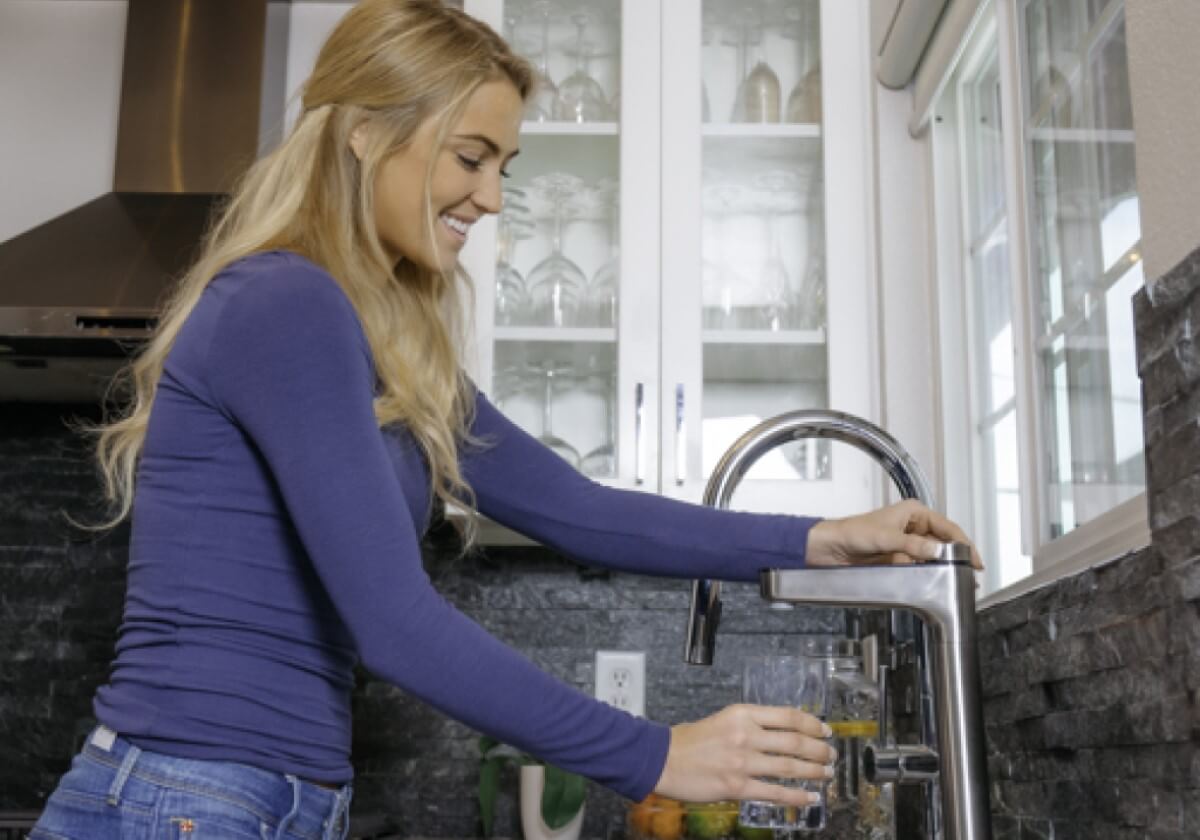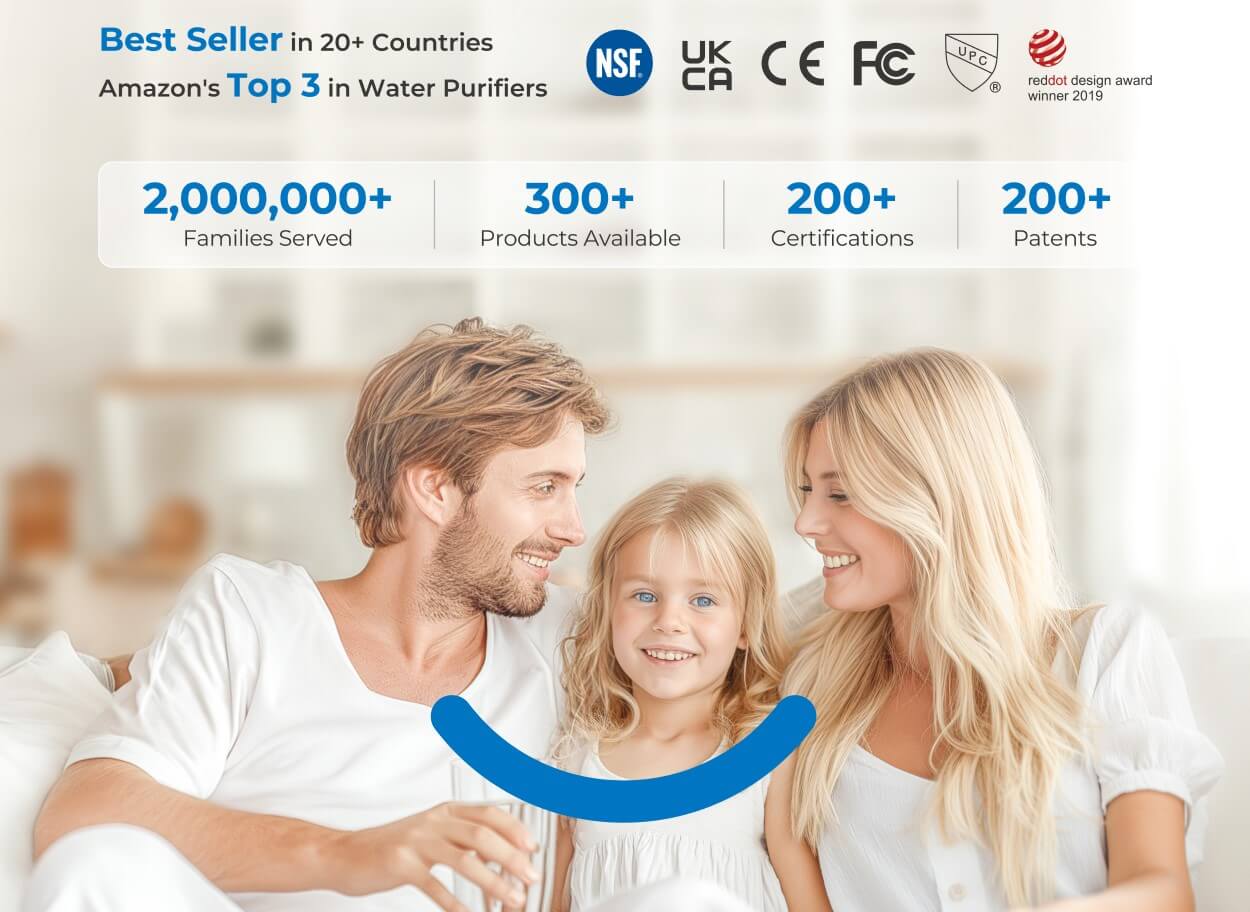Are you shopping for an ideal
whole house water filtration
system or a
reverse osmosis water
filter to produce clean water for your home? If so, you may encounter several different terms associated
with water filtration that you may not understand when shopping for water treatment systems.
It is essential to learn the meanings of these terms so you can choose the best
water filter to accommodate your clean water needs. Below are the top terms associated with water purification
to help you on this journey.
Water Filtration Related Terms
RO (Reverse Osmosis)
Reverse osmosis is
one method of water purification where water is pressurized and forced through a semi-permeable membrane to
remove most of its contaminants, bacteria, dissolved salts, minerals, and chemicals. Since a semi-permeable
membrane only allows water molecules to pass through it, most of the other contents in the water get left
behind.
A semi-permeable membrane is the equivalent of a screen door or layer that filters
debris. A water pump generates the pressure needed to move the water through the membrane. Once it comes out the
other side, most or all the contaminants in the water do not make it through.
UV (Ultraviolet) Disinfection
Ultraviolet disinfection is a water purification method specifically used to
destroy bacteria, viruses, and microorganisms living in the water.
UV
light is cast upon the water to modify the cellular DNA of the microorganisms in the water so that they
can no longer reproduce and increase their numbers. The ultraviolet light can kill the organisms in the source
water.
Most water treatment plants use ultraviolet disinfection to clean wastewater and
any other sources of water believed to have microbiological contamination. However, different kinds of inorganic
contaminants may remain in the water, such as salts, heavy metals, artificial substances, chlorine, and other
chemicals.
ACF (Activated Carbon Fiber)
Activated carbon fiber is a very porous
carbon-based material suitable for purifying and filtering water. Not only can it extract and remove chemical
compounds from water, but it can also eliminate foul odors emitting from it.
There are different types of activated carbon fiber products, although most are
made from either raw coal or coconut shells. These carbon materials go through a physical or chemical activation
process involving extremely high temperatures to produce micropores in the materials. The micropores can extract
chemical compounds from water as soon as they encounter them.
Activated carbon fiber is a great water filter for treating water that potentially
contains chemicals and carcinogens, especially tap water supplied by a local water treatment plant. City water
utility companies are known for using chlorine to eliminate bacteria and viruses from water, which means some
chlorine remains in the water when supplied to customers. Using activated carbon fiber to filter tap water can
help eliminate the chlorine.
Activated carbon fiber is ground up into a fine powder substance and compressed
into a hard solid block before being placed into a water filtration unit. Then, water passes through the carbon
block of the filter to remove its
organic
compounds .
GAC (Granular Activated Carbon)
Granular activated carbon has many similarities to activated carbon fiber. The most
significant similarity is they are both made from carbon and put through similar activation processes. They are
effective at removing common chemical compounds from water, such as chlorine, gasoline, solvents, and
pesticides.
However, the primary difference is that granular activated carbon is not prepared
as a fine powder like activated carbon fiber. Instead, it is lightly ground into small compact carbon granules
with both small and large pores on the surface.
Granular activated carbon is looser than activated carbon fiber, which means water
can flow through it faster. The benefit of using granular activated carbon filters is a faster filtration
process and a longer lifespan for your filter. The downside is that it does not filter out contaminants as
thoroughly and effectively as activated carbon fiber.
GPD (Gallons Per Day)
GPD or gallons per day refers to how much water can be purified each day through a
particular water purification product.
For example, if you see a water filter product advertised as having a capacity of
600 “gallons per day,” it means it can produce up to 600 gallons of purified water per day for your home or
business. The product would not be able to filter any more water than those 600 gallons in one day.
If you have a big family, the newly released Waterdrop X Series can meet your
family’s drinking water needs. The X12 can produce 1200 gallons of filtered water per day. That means you can
fill a cup of water in just a few seconds.
Contaminants Related Terms
TDS (Total Dissolved Solids)
The term “total dissolved solids” refers to the total amount of dissolved organic
and inorganic in the water. Some examples of common dissolved substances in water include bacteria, algae, heavy
metals, chlorides, salts, sodium, pollutants, and minerals.
A High TDS value means the water contains lots of dissolved substances and
contaminants. A low TDS value means the water has low levels of these dissolved substances. You can test your
water’s TDS regularly to make sure that the water you drink is safe and clean.
VOC (Volatile Organic Compounds)
VOC or volatile organic compounds are manufactured chemical compounds with low
water solubility and high vapor pressure. The best examples are manufactured chemicals like refrigerants,
paints, and pharmaceutical drugs that often end up in the public water supply.
Local water treatment facilities are supposed to remove volatile organic compounds
from water before supplying it to customers. However, many of them fail to remove all the volatile organic
compounds from the water. Fortunately, consumers can filter out these compounds themselves with activated carbon
filters or reverse osmosis water treatment systems.
Organization Related Terms
NSF (National Sanitation Foundation)
NSF (the National
Sanitation Foundation) is a national independent organization responsible for creating strict health
regulations and safety standards for consumer products, especially food and water-related products.
If a water purification product bears the NSF Certification mark, it means the
product has passed rigorous testing and inspection procedures to ensure it meets NSF’s strict standards.
ANSI (American National Standards Institute)
ANSI , or the
American National Standards Institute, is a nonprofit organization that develops national standards for American
products and services. It tries to base its standards on the same international standards provided by the ISO
(International Organization for Standardization).
There is no legal requirement for American products to receive ANSI certification,
but it would undoubtedly give consumers more trust if a product bore the ANSI Certification mark. Such a mark
indicates the product has been proven to have the highest levels of quality and excellence.
WQA (Water Quality Association)
WQA, or
the Water Quality
Association , is a prominent organization and trade association comprised of over 2,500 water treatment
equipment manufacturers and dealers. The association oversees the quality of water treatment equipment used in
residential, commercial, and industrial communities across the United States.
The ANSI and NSF have accredited WQA as an authorized water treatment testing and
certification agency. Any water purification equipment with the WQA Certification meets the strict quality
standards of ANSI and NSF.
Conclusion
Now, you should have a better understanding of the standard terms associated with
water purification and the various water purification products sold to consumers. By using this newfound
knowledge, you will have a better chance of choosing the right kind of water purification system for your home.


































































































































